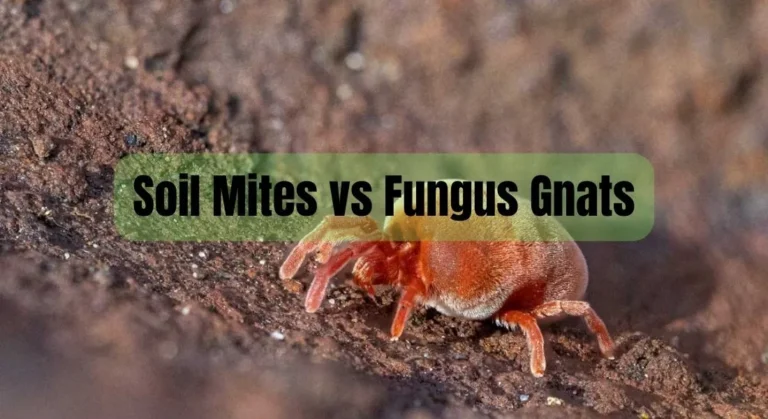How to Make Philodendron Micans Bushy: A Comprehensive Guide
Are you tired of your Philodendron Micans looking sparse and scraggly? Do you long for a lush and full plant that will be the envy of all your plant-loving friends? Well, you’re in luck!
As a fellow plant enthusiast, I’m excited to share my secrets for turning your Philodendron Micans into a stunning, bushy beauty that will add elegance to any space. From essential care tips to pruning techniques, we’ll cover everything you need to know to transform your plant into a showstopper.
So, get ready to take your Philodendron Micans to the next level and become the envy of all your green-thumbed peers!

How to Make Philodendron Micans Bushy
Choosing the Right Location
The first step to encouraging bushy growth in your Philodendron Micans is selecting the perfect spot for it to thrive. Here’s what you need to consider:
- Indirect sunlight: Philodendron Micans love bright, indirect light. Too much direct sunlight can scorch their delicate leaves. I’ve found that placing mine near an east or west-facing window with sheer curtains provides just the right amount of filtered light.
- Ideal temperature and humidity: These plants are tropical natives, so they appreciate a warm and humid environment. Aim for a consistent temperature between 65-80°F and humidity levels of 60-80%. I use a small humidifier near my Micans to keep the moisture levels in check.
Proper Watering Techniques
Watering your Philodendron Micans correctly is crucial for promoting bushy growth. Keep these tips in mind:
- Well-draining soil: I cannot stress this enough – your Micans needs soil that drains well to prevent root rot. I use a mix of regular potting soil, perlite, and orchid bark to create the perfect blend.
- Frequency of watering: How often you water your Micans depends on the moisture levels in the soil. I usually stick my finger about an inch deep into the soil to check for dampness. If it’s dry, that’s my cue to water.
- Signs of overwatering and underwatering: Overwatered Micans may have yellowing leaves and a wilted appearance, while underwatered plants might have crispy, brown leaf tips. Finding the right balance is essential for healthy growth.
Pruning and Training
Pruning your Philodendron Micans is a must if you want it to grow bushy. Here’s how to do it right:
- Timing and frequency of pruning: Prune your Micans during its active growing season, which is typically spring and summer. I like to give mine a trim every 2-3 months to encourage branching and dense growth.
- Identifying growth points: Look for the leaf nodes, which are the small bumps on the stem where new leaves emerge. This is where you’ll make your cuts.
- Proper pruning technique: Use clean, sharp pruning shears or scissors to make your cuts just above the leaf node. This encourages new growth at the node, leading to a bushier plant.
- Training your Philodendron Micans: To further promote bushiness, you can train your Micans to grow horizontally. I use small stakes or trellises to guide the plant along a path that encourages lateral growth.
Keep them at the Right Temperature
First things first, you’ve got to make sure your Philodendron Micans feels comfortable in its environment. These beauties grow best in the temperature range of 65-85°F (19-29°C).
Be cautious about exposing them to harsh sunlight, too much shade, or darkness, as this can stunt their growth. Also, keep them away from cold drafts of air and AC vents. Remember, no one likes to be chilly – not even plants!
How to Propagate Philodendron Micans
Propagating your Micans is a fantastic way to get more plants for your collection or to share with friends. Here’s my go-to method:
- Stem cutting method:
- Preparing the cutting: Choose a healthy stem with at least two leaf nodes. Using your clean, sharp pruning shears, make a cut just below a node.
- Rooting in water or soil: You can root your cutting in water or directly in soil. I’ve had success with both methods, but I prefer rooting in water because it’s fun to watch the roots grow!
- Transitioning to a permanent pot: Once your cutting has developed a robust root system, you can transfer it to a pot filled with well-draining soil. Be patient – it might take a few weeks for the cutting to acclimate and start showing new growth.
Give them Proper Light Exposure
Don’t forget that Philodendrons need a good amount of bright light to truly shine. If you’re going to grow it in a dark corner of a room, it’ll have stunted growth, and the leaves may lose their variegation.
Keep the plant near an east-facing window so it can enjoy mild morning sunlight for 2-3 hours. Avoid placing it near a south-facing window, as constant harsh afternoon sun exposure can burn the leaves.
If you live in an apartment, consider keeping it on the balcony for 1-2 hours to catch some rays, and then bring it back inside.
Essential Care Tips for Philodendron Micans

Using Well-Kept Tools
Your plants deserve the best, so take care of your gardening tools as much as you do your green babies. Use rust-free shears to prune the vines, as accumulated rust can carry bacteria that may infect your Philodendrons.
Clean your pruners with rubbing alcohol before and after trimming the plants to prevent transferring pests from other infected plants.
Keeping off Pests
Philodendrons can be prone to various insects and pests, such as aphids, mealybugs, and spider mites, making them leggy and thin. You definitely don’t want these uninvited guests hanging around your plant!
Keep them at bay by using insecticidal sprays available at local nurseries or make one at home with natural ingredients.
Watering the Plants Well
Hydration is crucial for everyone, including your Philodendron Micans. Leaves with brown edges and curls indicate that the plant is not getting enough water. Make sure you’re watering the plant well by keeping an eye on the topsoil.
When it feels dry to touch, water the plant until it seeps out from the pot’s drainage hole.
Maintaining High Humidity
These tropical plants thrive in high humidity, so your Philos will need 70-90% humidity to grow bushier. On dry days, try using a humidifier to help your vines.
Alternatively, you can place your plant on a saucer with pebbles and halfway-filled with water to create some moisture in the atmosphere. It’s like a mini tropical vacation for your plant!
Repotting Philodendron Micans
When to Repot
No one likes to feel cramped, and Philos are no exception. They hate being root-bound and need space to take on a fuller appearance. Repot the plant every 2-3 years to give it room to breathe and grow bushier.
Choosing the Right Pot
When repotting, pick a pot that’s slightly larger than the previous one. This will allow the roots to expand and create a healthier, more robust plant. Make sure the pot has proper drainage to prevent waterlogging, which can lead to root rot.
Fertilizing Philodendron Micans
Understanding Philodendron Micans’ Nutrient Requirements
Many people think that more fertilizer equals better growth, but that’s not the case with Philodendrons. These plants aren’t heavy feeders, and over-fertilizing can actually harm their growth. Moderation is key!
Types of Fertilizers to Use
If you’ve used a good quality potting mix, you might not even need to fertilize your plant. Adding a bit of compost to the growing medium every 6-8 weeks will give it the boost it needs.
If you’re growing your Philo in water, it’s best not to use any fertilizer – just change the water every 3-5 days. You can also opt for a balanced liquid fertilizer like 10-10-10 or 20-20-20, applying it every 8-10 weeks. Occasionally, applying Epsom salt can benefit your Philodendron, too.
Proper Fertilizing Schedule
Be mindful of the seasons when fertilizing your Philodendron Micans. Avoid fertilizing in winter, as the plant’s growth naturally slows down during this time. Stick to fertilizing during the growing season for the best results.
How to Identify and Treat Common Pests
Keeping your Philodendron Micans pest-free is essential for a bushy, healthy plant. Here are some tips:
- Identifying common pests: Spider mites and mealybugs are some of the most common pests that can affect your Micans. Regularly inspect your plant for signs of infestation, like webbing, small bugs, or a sticky residue on the leaves.
- Using organic and chemical treatments: I usually opt for organic treatments, like insecticidal soap or neem oil, to treat pests on my Micans. However, in severe cases, chemical pesticides might be necessary. Always follow the instructions on the treatment you choose.
- Preventative measures: Keep your Micans clean by regularly wiping its leaves with a damp cloth. This not only removes dust but also helps prevent pests from settling in.
Frequently Asked Questions (FAQs)
How often should I prune my Philodendron Micans for a bushy appearance?
Prune your Philodendron Micans as needed to maintain its shape and encourage bushiness. Regularly remove any overgrown or unhealthy stems, and keep an eye on its overall appearance to decide when pruning is necessary.
Can I grow my Philodendron Micans in water?
Yes, you can grow Philodendron Micans in water. Simply place a cutting with a few leaves and a healthy root system in a jar or vase filled with water. Make sure to change the water every 3-5 days to keep it fresh and prevent bacterial growth.
How do I know if my Philodendron Micans is getting enough light?
If your Philodendron Micans has vibrant, healthy leaves and is growing at a steady pace, it’s likely getting enough light. If the leaves are losing their variegation or the plant appears to be reaching for light, it may need a brighter spot.
What are the common pests that affect Philodendron Micans and how can I prevent them?
Common pests that can infest Philodendron Micans include aphids, mealybugs, and spider mites. To prevent these pests, regularly inspect your plant for any signs of infestation and keep it clean. Use insecticidal sprays or natural remedies to treat any existing infestations, and consider isolating the affected plant to prevent the pests from spreading to other plants.
Can I use regular potting soil for my Philodendron Micans?
Yes, you can use regular potting soil for your Philodendron Micans. However, it’s recommended to use a well-draining mix that contains peat moss or coco coir, perlite, and some compost or aged bark to provide the plant with the nutrients it needs for healthy growth.
Can I grow Philodendron Micans in a hanging basket?
Absolutely! Philodendron Micans looks stunning in a hanging basket, with its velvety leaves cascading over the sides. Just make sure to follow the care tips outlined in this article to ensure a bushy, healthy plant.
Conclusion
By following the tips and techniques outlined in this article, you can turn your Philodendron Micans into a lush and bushy plant that will be the envy of all your plant-loving friends.
Remember to prune regularly, propagate when necessary, fertilize properly, and give your plant the right amount of water and soil. With a little bit of care and attention, your Philodendron Micans will thrive and become a beautiful addition to your home or office.






